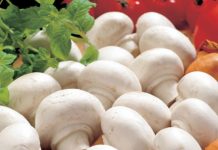Many housewives find it rather difficult to answer the question of when the eggs stored in the refrigerator were purchased. Not to mention the fact that it is not known how long they lay in the store. Therefore, the question of how to check eggs for freshness often becomes very relevant. This article will reveal all the intricacies of identifying “old” eggs and talk about how to conduct simple but effective freshness tests.
Material Content:
Checking eggs for freshness at home
Eggs are considered a valuable source of trace elements and vitamins. Chicken caviar is used as an independent dish, or various dishes are prepared on its basis.

But if fresh this product brings the body only benefits, then the use of spoiled eggs can lead to poisoning, which entails serious health problems up to death.
Identify a product that has been stored for a long time, you can still in the supermarket.
So, the freshness of eggs is determined by the following criteria:
- Surface structure. The shell of fresh eggs is dull and slightly rough to the touch. The old ones will stand out with a glossy shine and turn out to be smooth.
- Smell. The eggshell has the ability to absorb the smells of surrounding objects, like a sponge. If fresh foods smell like lime, then over time they will attract extraneous aromas.
- Sound and vibration level when shaking. If you bring a raw chicken egg to your ear and shake it slightly, when it is fresh, there will be no extraneous sounds. Gurgling and vibration occur if the product is stored for a long time.
- Product weight.If a fresh egg weighs from 55 to 70 g, then as a result of long-term storage, this figure will decrease.
- Type of egg in clearance. If possible, you need to bring the egg to the window or lighting device. When the product is fresh, it will be perfectly visible, in addition, there will not be dark inclusions inside. And the “air chamber” located in the wide part of the egg will be barely noticeable. The longer the product is stored, the more this formation.
- Reaction to unwind. If there is an even horizontal surface near the counter, it is worth laying an egg on it and spin it with your fingers. A fresh product will quickly stop its movement, and one that has been stored for a long time, just like a boiled one, will be wrapped in a “top”.
Products that do not meet the specified requirements should not be purchased; most likely, they are stored on shelves for a long time and will not bring any benefit to the body.
Checking the freshness of raw eggs in the water
Even if the results of testing conducted in the store turned out to be quite satisfactory, it is worthwhile to conduct an additional check at home before eating eggs. This can be done by immersing the product in a glass of water.
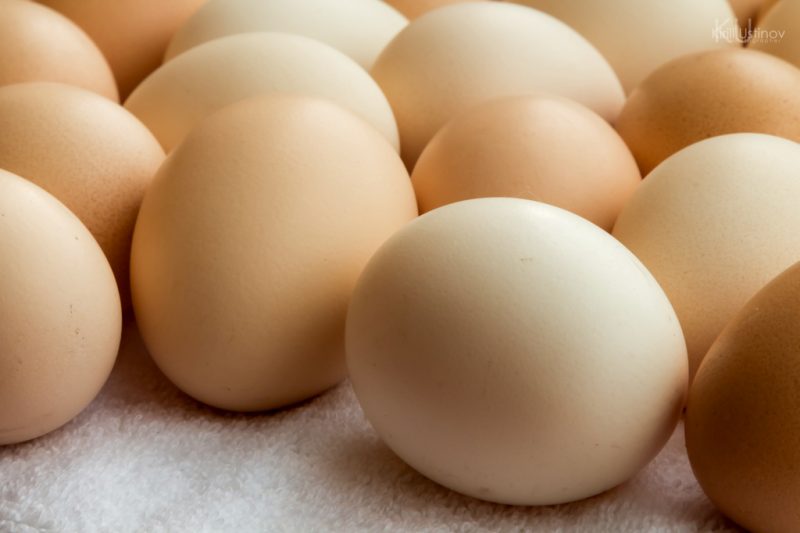
The results are interpreted as follows:
- when the egg sank to the bottom and lay on the barrel, this indicates its freshness - most likely, it was laid during the day;
- “Age” of the egg, the sharp end of which rests on the bottom, and the blunt looks at the surface for at least 7 days;
- the product, located strictly perpendicular to the bottom with a blunt end up, has been stored for 14 days or more;
- an egg that floated to the surface was laid at least a month ago.
On a note. Some housewives dissolve salt in water before loading eggs, explaining that the result will be more accurate. However, this is nothing more than a myth, and therefore it is pointless to spend the product without benefit.
Visual assessment of protein and yolk quality
Another way to check the purchased product at home for freshness is to break it into a deep plate. It is advisable to use this method in cases where a raw egg is required during the cooking process.
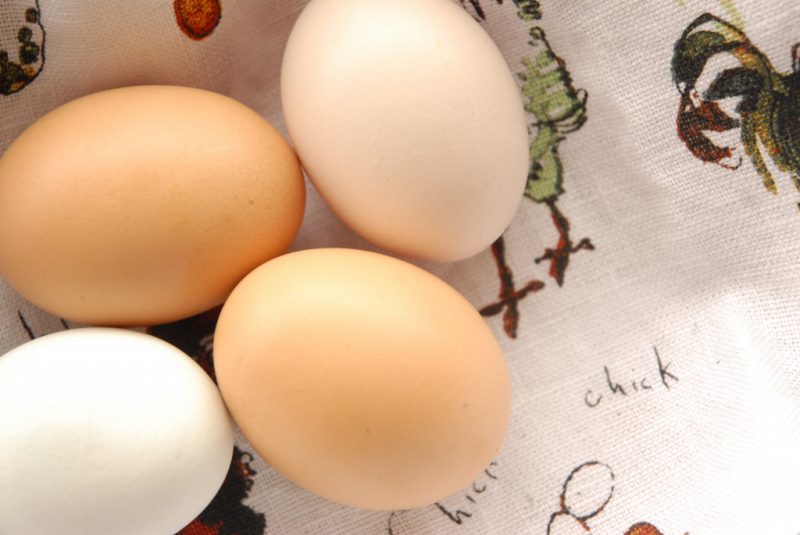
The product in the bowl should be carefully considered. Fresh protein has a transparent, jelly-like consistency. In this case, its lower layer will be thicker, and the upper one will be more liquid. For a long-stored product, this stratification is almost invisible.
The yolks of fresh eggs are bright, lush and convex, and if the product is not of the first freshness, they become flat.
It is interesting:scrambled eggs
How to check the freshness of quail eggs?
The freshness of quail eggs is determined approximately in the same way as chicken eggs.

- In the store you can weigh an egg. The weight of one piece is from 10 to 14 g. If there is no suitable, hypersensitive device in the outlet, you can estimate the weight of the boxes by picking them up and choose the heaviest.
- After that, you need to carefully examine each egg for cracks or damage. Bacteria and pathogenic microorganisms are able to penetrate even into a microscopic hole, so the shell must be intact.
- After making a purchase, it is worth conducting a test with water at home. Freshness is evaluated according to the same principle as in the case of chicken eggs.
- A broken quail egg holds its shape and does not spread. Therefore, you should know that the yolk is not always located inside the protein, in some cases it is located next to it.
Boiled Egg Quality Criteria
Egg freshness can be determined not only when it is raw, but also after cooking. First of all, pay attention to how the shell is removed. The more difficult this process is, the less is the "age" of the egg.
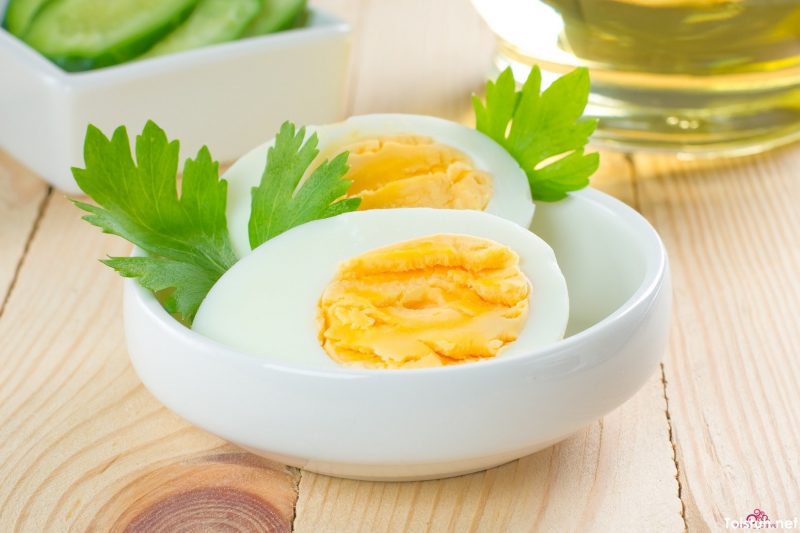
The second sign is smell. At all stages of freshness, the eggs smell of sulfur, but if the product is recently demolished it is almost imperceptible, then with time the amber intensifies.
Peel the egg and evaluate the outgoing smell, it will need to be cut. Bad signs are considered to be watery, as well as the presence of mucus.
Attention! Often you can notice a greenish, gray or bluish edging on the edges of the yolk. This symptom does not always indicate spoilage of the product, a “rim” can also appear in cases where a fresh egg is simply digested.
Ovoscope test for egg freshness
There is a special device with which you can determine the quality of the eggs. It is called an ovoscope, and the essence of its work is to illuminate the product with bright lamps. This allows you to detect various defects.
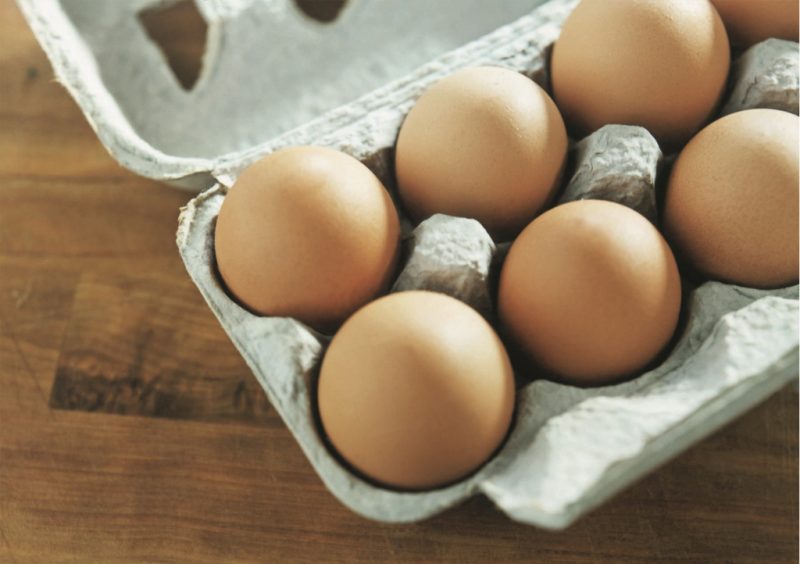
Some devices are designed to simultaneously study a large number of objects, but they are used on an industrial scale. For home use, an ovoscope containing one egg is enough.
Fresh will be clearly visible, while old or damaged will remain opaque. The yolk of a quality product is located in the center, and the protein is homogeneous. Spots, blotches and dark areas indicate at least two weeks of product storage.
Egg Shelf Life
Eggs can be stored in the refrigerator for 24 to 28 days after they have been laid. Moreover, in the first week the product is considered a dietary product, and subsequently it is considered a canteen.
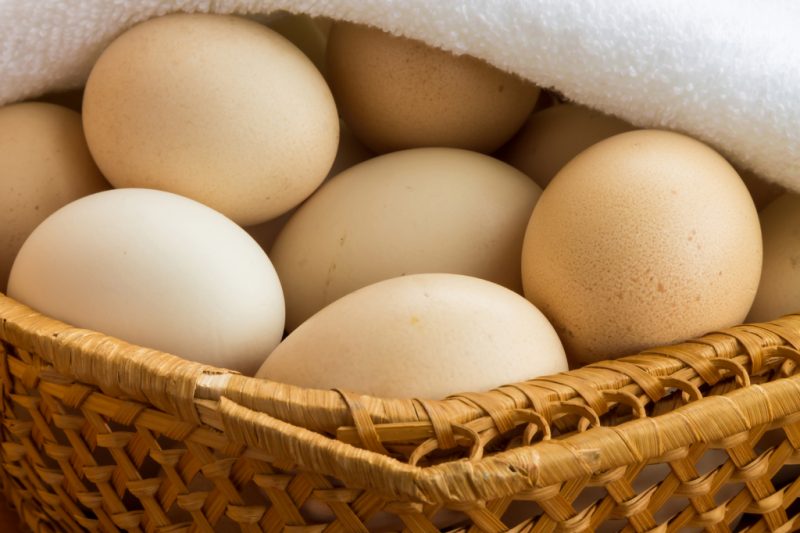
It is important to remember that even at the “dietary” stage, eggs are considered allergenic products, and these properties only increase over time. For this reason, people prone to such reactions, as well as children and the elderly, should use this product only if its “age” does not exceed 7 days.




